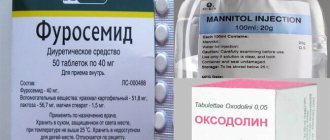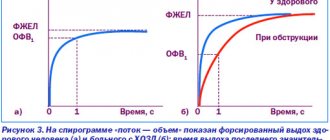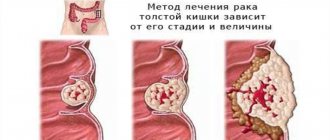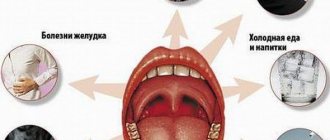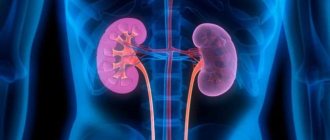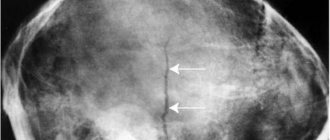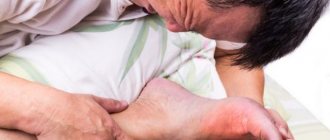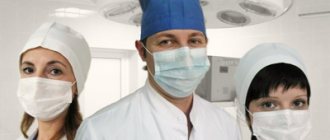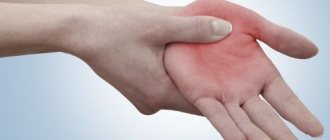Diseases that are present in a child at birth in a latent or obvious form are considered congenital. There are actually congenital and hereditary conditions.
The former are acquired during the process of intrauterine development, while the latter are initially inherent in genes and are inherited from parents. The description of the categories is very conditional, since a significant part of the defects is a combination of a genetic basis and the influence of external negative factors. Congenital malformations of the fetus and related problems are studied by doctors such as embryologists, neonatologists, geneticists and prenatal diagnostic specialists.
"Stone Man" Syndrome
This congenital hereditary pathology, also known as fibrodysplasia ossificans progressive, or Munheimer's disease, occurs due to a mutation in one of the genes and is one of the rarest diseases in the world.
The bottom line is that inflammatory processes occurring in ligaments, muscles, tendons and other connective tissues lead to calcification and ossification of matter, which is fraught with serious problems with the musculoskeletal system. This disease is also called “disease of the second skeleton”, since there is active growth of bone tissue in the human body.
At the moment, 800 cases of fibrodysplasia have been registered in the world, and so far doctors have not found effective methods for treating or preventing this disease - only painkillers are used to alleviate the plight of patients. It must be said that there is hope for correcting the situation, since in 2006 scientists were able to discover which genetic abnormality leads to the formation of a “second skeleton,” and active clinical trials are currently underway to develop ways to combat this terrible disease.
Kidney disease nephrotic syndrome and biochemical diagnosis
Nephrotic syndrome (ICD-10, N04) is a developing complex of symptoms associated with a long-term and pronounced increase in the permeability of the kidney glomeruli to proteins. The main symptom is proteinuria (more than 5 g/day) or in single urine samples the protein/creatine ratio is more than 2, generalized edema, lipiduria, lipemia, hypoalbuminemia, hypovolemia. With severe hypovolemia, a nephrotic crisis with abdominal pain and skin erythema is possible. In children, a sign of this kidney disease is ascites. Hematuria is moderate, more often in adults. According to one hypothesis, nephrotic syndrome (primary) is a genetically determined diffuse lesion of podocytes (podocytes are the cells of the epithelial lining of glomerular capillaries). Secondary nephrotic syndrome accompanies such types of kidney diseases as membranous glomerulonephritis, membranous-proliferative glomerulonephritis, mesangial glomerulonephritis, Ig A-pathy, focal glomerulosclerosis, rapidly progressing glomerulonephritis. These diseases cause dystrophic changes in podocytes.
An effective combination of biochemical tests in the diagnosis of this kidney disease is presented in the table:
| Biochemical test | Direction of change |
| Protein in urine | from 5 to 50 g/day |
| Albumin in the blood | Decline |
| Ig E in blood | Promotion |
| 1d M in the blood | Promotion |
| Inulin clearance | Decline |
| Cholesterol in the blood | Promotion |
| Urine volume | Decline |
| ESR | Promotion |
| Fat casts in urine sediment | W |
According to another hypothesis, factors that increase glomerular vascular permeability are produced by T-lymphocytes in the blood: these are lymphokines - interleukin-2 (IL-2), interleukin-4 (IL-4), tumor necrosis factor (TNF).
Progressive lipodystrophy
People suffering from this unusual condition appear much older than their age, which is why it is sometimes called “reverse Benjamin Button syndrome.” For example, in one famous case of this type of lipodystrophy, 15-year-old Zara Hartshorn is often mistaken for the mother of her older 16-year-old sister. What is the reason for such rapid aging?
Due to an inherited genetic mutation, and sometimes as a result of the use of certain medications, autoimmune mechanisms in the body are disrupted, which leads to rapid loss of subcutaneous fat reserves. Most often, the fatty tissue of the face, neck, upper limbs and torso is affected, resulting in wrinkles and folds. So far, only 200 cases of progressive lipodystrophy have been confirmed, and it mainly develops in women. In treatment, doctors use insulin, facelifts and collagen injections, but this gives only a temporary effect.
Kidney disease Barter's syndrome
Barter syndrome (salt-wasting nephritis) is a disease characterized by a combination of water-electrolyte and hormonal disorders and accompanied by the excretion of potassium, sodium, and chloride ions by the kidneys in the urine. Hypokalemia, hypocalcemia, hypochloremia occur in the body, and each of these factors stimulates hyperplasia of juxtaglomerular cells of the kidneys, stimulates the secretion of renin, which increases the level of aldosterone in the blood. Hyponatremia causes chronically low plasma volume, which results in normal blood pressure despite high levels of renin and angiotensin. Metabolic alkalosis, hyperuricemia, hypomagnesemia often develops; platelet aggregation decreases. Urinary excretion of prostaglandins and kallikrein increases.
An effective combination of biochemical tests in the diagnosis of salt-wasting nephritis (Barter syndrome):
| Biochemical test | Direction of change |
| Sodium in the blood | Decline |
| Chlorides in the blood | Decline |
| Urea in the blood | Promotion |
| Creatinine in blood | Promotion |
| Potassium in the blood | Decline |
Geographic language
Interesting name for a disease, isn't it? However, there is a scientific term for this “sore” - desquamative glossitis.
Geographic tongue occurs in approximately 2.58% of people, and most often the disease has chronic properties and worsens after eating, during stress or hormonal stress.
Symptoms manifest themselves in the appearance of discolored smooth spots on the tongue, reminiscent of islands, which is why the disease received such an unusual nickname, and over time, some “islands” change their shape and location, depending on which of the taste buds located on the tongue heal, and some, on the contrary, get irritated.
Geographic tongue is practically harmless, if you do not take into account increased sensitivity to spicy foods or some discomfort that it can cause. Medicine does not know the causes of this disease, but there is evidence of a genetic predisposition to its development.
8.Hepatitis A and B
The next place is occupied by Hepatitis A and B. Hepatitis A is also called Botkin's disease - it is an acute and infectious disease of the liver. Transmitted through contaminated water or food. In countries with poor hygiene, a large number of people suffer from hepatitis A. Hepatitis B is a viral disease caused by the hepatitis B virus. The hepatitis B virus is resistant to many physical and chemical influences. Can exist for a long time in frozen foods. Infection with hepatitis B can occur through sexual, artificial and domestic means.
Gastroschisis
This somewhat funny name hides a terrible birth defect in which loops of intestine and other internal organs fall out of the body through a cleft in the anterior wall of the abdominal cavity.
According to statistics from American doctors, gastroschisis occurs on average in 373 out of 1 million newborns, and young mothers have a slightly higher risk of having a child with this disorder. Previously, approximately 50% of infants with gastroschisis died, but thanks to the development of surgery, mortality has been reduced to 30%, and in the best clinics in the world, approximately nine out of ten babies can be saved.
Classification
Somatic diseases are divided into 2 categories. The list of acute diseases is more often typical for children and adults under 30 years of age. Pathologies appear more often in girls and women. Some may be inherited.
The second category is chronic pathologies. They enter this stage from the acute phase. In young children, somatic diseases are rarely diagnosed, more often starting from adolescence.
Classification:
| Types of pathologies | Characteristic |
| Conversion | Occurs after a neurotic conflict. For example, deafness, paralysis, blindness. These somatic diseases are temporary. |
| Organic | Their development is provoked by stress, strong feelings, and fear. Such somatic diseases are often accompanied by severe pain. Localization may vary. |
| Pathological disorders | Their occurrence depends on the individual characteristics of the organism. For example, increased hyperactivity of a child can cause increased injuries, and addiction to fatty foods can lead to obesity and diabetes. |
In childhood, somatic diseases usually appear as a result of defective development, birth injuries, or under the influence of external causes. Some pathologies develop in the mother’s womb and become more severe after birth. The main symptoms of somatic diseases are pain, loss of appetite, insomnia, manifestations of dysfunction of internal organs.
Xeroderma pigmentosum
Scenario of your happy life
A free online marathon that will help you find financial stability, find your calling, and make your life bright and eventful!
Become a member
This hereditary skin disease manifests itself in a person's increased sensitivity to ultraviolet rays. It occurs due to mutations in proteins responsible for correcting DNA damage that occurs when exposed to ultraviolet radiation. The first symptoms usually appear in early childhood (up to 3 years): when the child is in the sun, he develops serious burns after just a few minutes of exposure to sunlight. The disease is also characterized by the appearance of freckles, dry skin and uneven discoloration of the skin.
According to statistics, people with xeroderma pigmentosum are more at risk of developing cancer than others: in the absence of proper preventive measures, approximately half of children suffering from xeroderma will develop some kind of cancer by the age of ten. There are eight types of this disease of varying severity and symptoms. According to European and American doctors, the disease occurs in approximately four people out of a million.
2. ARVI
In second place is influenza or ARVI. Acute respiratory viral infections (ARVI) are a group of diseases that usually affect the respiratory system and are transmitted by airborne droplets. Most often, the cause of the disease can be viruses; every year viruses mutate and a large number of their varieties appear, for example, bird flu, swine flu and others. Symptoms are usually the most common: cough, runny nose, sore throat, possible fever. Treatment can last from 5-7 days to 3 weeks. ARVI is a very common disease in people. During an epidemic (autumn and spring), every second person can get sick from ARVI.
Arnold-Chiari malformation
In simple terms, the essence of this disease is that due to the rapid growth of the brain in the slowly developing bones of the skull, the cerebellar tonsils are immersed in the foramen magnum with compression of the medulla oblongata.
Previously, it was believed that the deviation was exclusively congenital, but recent studies prove that this is not so. The incidence of this anomaly ranges from 33 to 82 cases per million, and it is diagnosed in both children and adults.
There are several types of Arnold-Chiari malformation: from the most common and least severe first, to the very rare and dangerous fourth. Symptoms can appear at different ages and most often begin with severe headaches. One of the recognized methods of helping with the disease is surgical decompression of the skull.
Diseases section
- Agenesis and aplasia of the uterus Congenital and genetic diseases
- Agenesis and underdevelopment of the nose Congenital and genetic diseases
- Anomalies of the relationship of the kidneys: fused, lobulated or horseshoe-shaped kidney Urology
- Urachal abnormalities Congenital and genetic diseases
- Arnold-Chiari malformation Congenital and genetic diseases
- Abnormally positioned ear Congenital and genetic diseases
- Atresia of the vas deferens Congenital and genetic diseases
- Choanal atresia Congenital and genetic diseases
- Bernhardt-Roth disease Congenital and genetic diseases
- Huntington's disease Congenital and genetic diseases
- Kugelberg-Welander disease Congenital and genetic diseases
- McArdle's disease Congenital and genetic diseases
- Moya-Moya disease Congenital and genetic diseases
- Charcot-Marie-Tooth disease Congenital and genetic diseases
- Strumpel's disease Congenital and genetic diseases
- Bulbospinal amyotrophy Kennedy Congenital and genetic diseases
- Sunken chest Congenital and genetic diseases
- Congenital anomaly of the inner ear Congenital and genetic diseases
- Congenital malformation of the clitoris Congenital and genetic diseases
- Congenital anomaly of the auditory ossicles Congenital and genetic diseases
- Congenital deformity of the sternocleidomastoid muscle Congenital and genetic diseases
- Congenital spinal deformity Congenital and genetic diseases
- Congenital perforation of the nasal septum Congenital and genetic diseases
- Congenital absence of the vagina Congenital and genetic diseases
- Congenital absence and aplasia of the penis Congenital and genetic diseases
- Congenital absence of bladder, ureters Congenital and genetic diseases
- Congenital absence of the auricle Congenital and genetic diseases
- Congenital absence of ovaries Congenital and genetic diseases
- Congenital absence, atresia, stricture of the external auditory canal Congenital and genetic diseases
- Congenital posterior urethral valves Congenital and genetic diseases
- Congenital hydronephrosis Congenital and genetic diseases
- Congenital megaureter Congenital and genetic diseases
- Congenital ovarian torsion Congenital and genetic diseases
- Congenital rectovaginal fistula Congenital and genetic diseases
- Congenital scoliosis caused by a bone malformation Congenital and genetic diseases
- Congenital spondylolisthesis Congenital and genetic diseases
- Congenital stenosis of the larynx under the vocal apparatus itself Congenital and genetic diseases
- Congenital laryngeal stridor Congenital and genetic diseases
- Protruding ear Congenital and genetic diseases
- Hypoplasia of the larynx Congenital and genetic diseases
- Bicornuate uterus Congenital and genetic diseases
- Hymen, completely covering the entrance to the vagina Congenital and genetic diseases
- Accessory kidney Congenital and genetic diseases
- Accessory auricle Congenital and genetic diseases
- Keeled breasts Congenital and genetic diseases
- Cystic ovarian abnormality Congenital and genetic diseases
- Cryptorchidism Congenital and genetic diseases
- Macrotia Congenital and genetic diseases
- Macrostomia Congenital and genetic diseases
- Macrocheilia Congenital and genetic diseases
- Microotia Congenital and genetic diseases
- Microstomia Congenital and genetic diseases
- Microcheilia Congenital and genetic diseases
- Cystic fibrosis Congenital and genetic diseases
- Neurofibromatosis type I Congenital and genetic diseases
- Gender uncertainty and pseudohermaphroditism Congenital and genetic diseases
- Unicornuate uterus Congenital and genetic diseases
- Absence of the Eustachian tube Congenital and genetic diseases
- Absence and aplasia of the testicle Congenital and genetic diseases
- Periodic hyperkalemic paralysis Congenital and genetic diseases
- Polydactyly Congenital and genetic diseases
- Preauricular sinus and cyst Otorhinolaryngology
- Progressive muscular dystrophy Becker Congenital and genetic diseases
- Early cerebellar ataxia Congenital and genetic diseases
- Syndactyly Congenital and genetic diseases
- Down syndrome Congenital and genetic diseases
- Klippel-Feil syndrome Congenital and genetic diseases
- Syringomyelia Congenital and genetic diseases
- Fusion of the labia minora Congenital and genetic diseases
- Tetralogy of Fallot Congenital and genetic diseases
- Vaginal duplication Congenital and genetic diseases
- Duplication of the uterine body with duplication of the cervix and vagina Congenital and genetic diseases
- Celiac disease Congenital and genetic diseases
- Cervical rib Congenital and genetic diseases
- Embryonic cyst of the fallopian tube Congenital and genetic diseases
- Embryonic cyst of the broad ligament of the uterus Congenital and genetic diseases
- Epispadias, hypospadias Congenital and genetic diseases
- Essential myoclonus Congenital and genetic diseases
- Essential tremor Congenital and genetic diseases
Alopecia areata
The reasons for the development of this disease lie at the cellular level - the immune system mistakenly attacks the hair follicles, which leads to baldness. One of the most severe and rare forms of this disease, alopecia totalis, can lead to complete loss of hair on the head, eyelashes, eyebrows and leg hair, while in some cases the follicles are capable of self-healing.
About 2% of the world's population is affected by the disease, and methods for treating and preventing the disease are currently being developed, however, the fight against alopecia areata is complicated by the fact that in the initial stages the deviation is characterized only by itching and increased sensitivity of the skin.
Diabetes
Diabetes mellitus is one of the most exciting pathologies. The number of patients is growing noticeably, and the disease affects the quality of life even in a milder form, when additional insulin injections are not yet required. “More than 5,000 people are diagnosed with this every second. We can talk about an epidemic of diabetes,” says the therapist.
There are certain early signs that allow you to recognize the onset of diabetes and quickly take control of your life so that there are no dangerous consequences. Among them:
- constant feeling of hunger;
- constant fatigue;
- thirst or dry mouth;
- you place a glass of water near your bed at night;
- Article on the topic
Diabetes mellitus and COVID-19. What you need to know to avoid complications: increased urination;
- blurred vision;
- skin problems (dryness, fungus);
- wounds heal poorly;
- pain or numbness in the legs;
- frequent or persistent cough;
- sputum separation;
- shortness of breath or difficulty breathing;
- symptoms occur more often in the morning;
- constant fatigue, fatigue.
If suddenly such symptoms appear, or even several at once, it is better not to attribute it to overwork and not hope that everything will return to normal on its own. It is necessary to take tests: blood, urine and blood glucose levels. You also need to visit a therapist and endocrinologist. Treatment today to maintain the body in working condition is free.
Nail-patella syndrome (nail-patella syndrome)
This disease in its mild form manifests itself in the absence or abnormal growth of nails (with depressions and growths), but its symptoms can be quite varied - up to more serious skeletal abnormalities such as severe deformation or absence of the kneecap. In some cases, visible growths on the posterior surface of the ilium, scoliosis and patellar luxation are noted.
The rare hereditary disorder occurs due to a mutation in the LMX1B gene, which plays an important role in the development of limbs and kidneys. The syndrome occurs in 1 person out of 50 thousand, but the symptoms are so varied that sometimes identifying the disease at the initial stage is incredibly difficult.
Oncology
Oncological diseases take second place in the list of causes of death in the world. They are second only to cardiovascular pathologies in prevalence. “Oncology claims many lives, in particular among people under 45 years of age, and this is the working-age population. Therefore, you need to be able to recognize the first signs that may signal this problem,” says the therapist. Moreover, the specialist emphasizes, cancer detected in the early stages has better survival prognosis.
It's scary not to know. Over six months, the number of deaths from cancer decreased by 3.9% Read more
The first signals that should prompt a visit to the doctor and medical examination are the following:
- changes in the rhythm of bowel movements and urination;
- non-healing ulcers;
- unusual bleeding or spotting;
- lump or swelling in the breast, scrotum, or other places;
- digestive disorders;
- difficulty swallowing;
- changes in the appearance of moles and warts;
- persistent cough;
- hoarseness of voice.
Here it is worth going to a therapist, and then, if necessary, to a specialist and an oncologist.
Hereditary sensory neuropathy type 1
One of the rarest diseases in the world, this type of neuropathy is diagnosed in two out of a million people. The anomaly occurs due to damage to the peripheral nervous system resulting from an excess of the PMP22 gene.
The main sign of the development of hereditary sensory neuropathy type 1 is loss of sensation in the arms and legs. A person stops experiencing pain and feeling a change in temperature, which can lead to tissue necrosis, for example, if a fracture or other injury is not recognized in time. Pain is one of the body’s reactions that signal some kind of “problem”, so the loss of pain sensitivity is fraught with too late detection of dangerous diseases, be it infections or ulcers.
5.Headache
In fifth place we have a headache. Headache can be the primary symptom of many diseases. Headaches are sometimes simply unbearable and can appear due to lack of sleep, constant stress, overwork, heavy physical exertion, and so on. The hard tissues of the head contain pain receptors that are responsible for headaches. If they get irritated, then pain occurs. There are several types or types of headaches: throbbing, squeezing, dull and various others. Sometimes just one headache in a person can predict cardiovascular disease, coronary heart disease, or stroke. Pain in the head can also indicate an eye disease: glaucoma, strabismus. A headache can also begin as a result of a traumatic brain injury, concussion, or head contusion. And also, headaches often accompany viral diseases: influenza, ARVI.
Side effects of therapy
Each person is individual, so the reaction to a drug will not always be typically positive. There are 3 types of side effects:
- Allergic;
- Toxic;
- Medicinal.
Allergies can occur to absolutely any form of medication. Poisoning often occurs with an overdose. Typical adverse reactions due to the pharmacological action of the drug include:
- vascular reactions with a drop in blood pressure (headache, dizziness, weakness, fainting, vomiting, tachycardia);
- dyspepsia (nausea, heartburn, belching, vomiting, diarrhea);
- shortness of breath, cough.
Taking medication is a strong and pronounced effect on the body: you should not take medications lightly, taking antibiotics or hormones internally for or without the need. Drug therapy is a method of treatment tactics that the doctor uses in the fight against the disease: pharmacotherapy can be started only after examination and clarification of the cause of the disease, be sure to follow the specialist’s prescriptions regarding the dosage and combination of medications.
Terms for determining disability
The period for determining disability of group 1 is two years, groups 2 and 3 – one year. For a “disabled child” – 1 year, 2 years, 5 years, and in some cases – up to 18 years.
At the end of the specified period, disabled people are required to undergo re-examination to confirm or refute their disability. If confirmed, the disabled person remains in the previous disability group or is assigned a new group.
Certain categories of disabled people have the right to receive permanent disability - here are some of them:
- disabled men over 60 years of age and women over 55 years of age (for all disability groups);
- disabled men who must undergo regular re-examination after turning 60 (for all disability groups);
- disabled women who must undergo regular re-examination after turning 55 (for all disability groups);
- disabled military personnel who have been diagnosed as disabled as a result of injuries and diseases received during military service (for all disability groups).
Permanent disability can also be established in the presence of certain diseases, which include:
- malignant tumors;
- benign brain tumors;
- incurable mental illness;
- severe nervous diseases;
- irreversible changes in the brain;
- systemic diseases of internal organs with a constant tendency to worsen a person’s condition;
- severe limb defects, including amputations;
- complete blindness and deafness.
A detailed list of diseases and conditions under which permanent disability is established is presented in the Decree of the Government of the Russian Federation of February 20, 2006 “On the procedure and conditions for recognizing a person as disabled.”
Congenital and hereditary diseases
Kidney problems are often associated with abnormalities that are congenital or hereditary. This kind of disease is observed in a quarter of patients with chronic kidney pathologies. Hereditary and congenital diseases are classified as follows:
- Anatomical pathologies of the kidneys, which in turn are divided into quantitative pathologies and deviations in the shape of organs.
- With histological disembryogenesis of the organ, the formation of a cystic formation or other abnormalities of the kidneys is possible already in the process of intrauterine development.
- The presence of hereditary nephritis.
- Tubulopathy of primary, secondary or dysmetabolic type.
- Uropathy or nephropathy develops when chromosomal or monogenic syndromes are present in the structure.
- Children often experience Wilms tumor, which occurs during fetal development.

